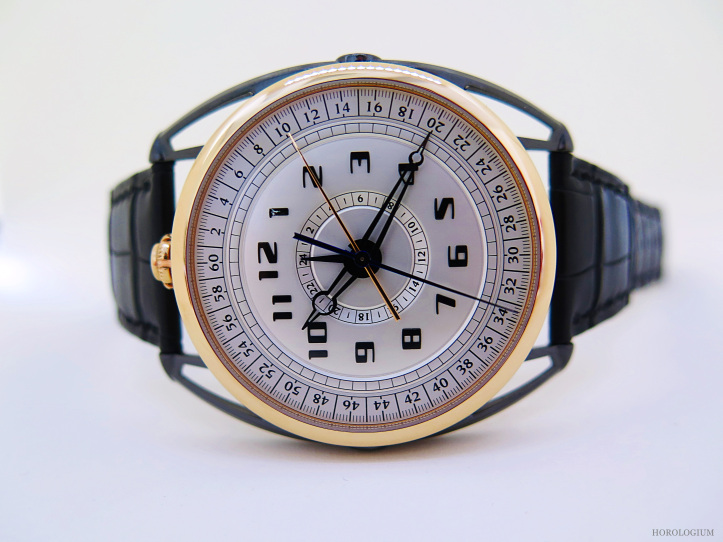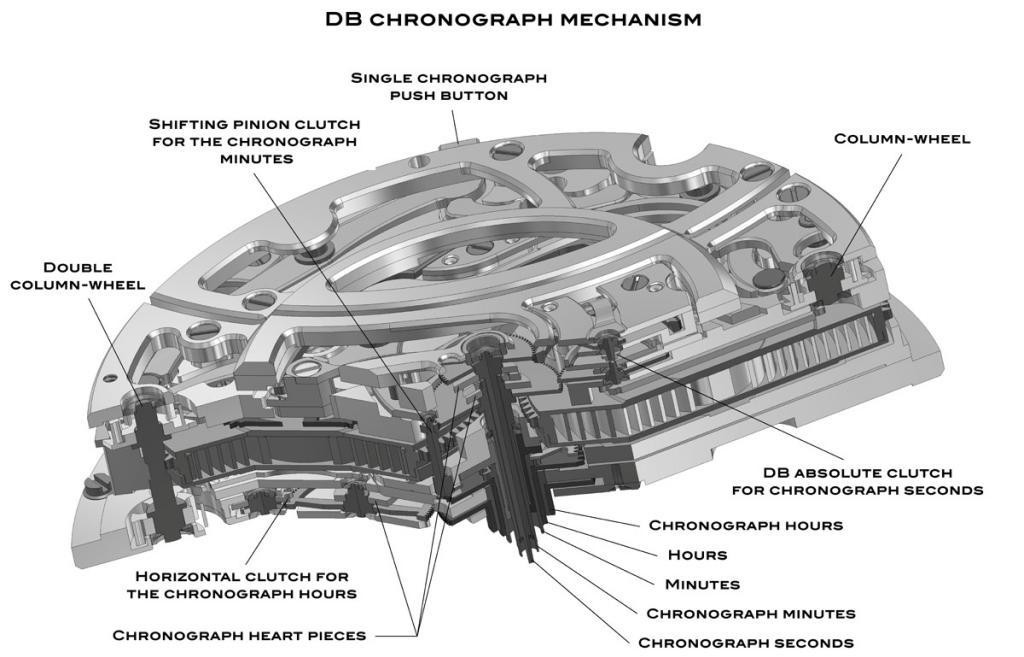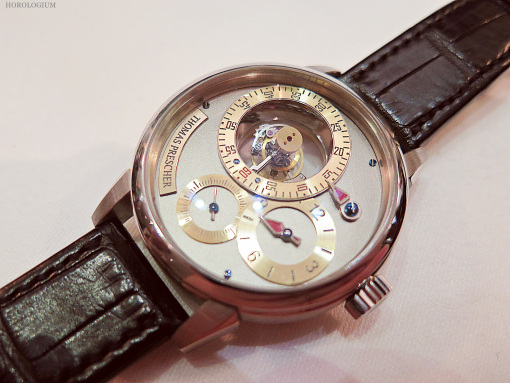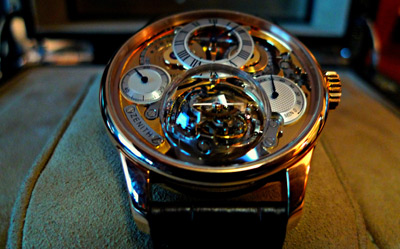
During Baselworld 2014 De Bethune introduced a new chronograph with what they call the ‘Absolute Clutch System’. With a price tag of some CHF 166,000, exactly what sort of chronograph this is, has been the prevailing question. Well I recently got to find out, when Alessandro Zanetta visited Sydney and I had the opportunity to see it (and other new releases) at The Hour Glass, Sydney.
At first glance you will notice the first special aspect of this swiss replica watch – that the (monopusher) chronograph’s seconds hand, 60-minute counter and 24-hour counter are all co-axially mounted in the centre, along with the hour and minute hands.

The DB28 features the recognisable De Bethune case and floating lugs, which mean that, as with all their pieces with this lug system, it is incredibly comfortable on the wrist. The case is 5N rose gold, 45mm and with a thickness of 11mm. You will note that the (dual-setting) crown, which is also monopusher for the chronograph function, is at 12 o’clock.
Through the open case back, with its 1800 Vickers sapphire crystal, can be seen the manual-wind DB2030 Calibre with a frquency of 36,000 VPH. The calibre conssits of three hundred and eighty-four parts, and is hand finished and decorated, including hand-polished steel bridges. There is a silicon/white gold balance wheel and a balance-spring with flat terminal curve.

As an explanatory segue, the small spiral balance-spring is the heart and most important part of a replica watch movement, its beat regulating the energy delivered from the main spring barrel and gear train at fixed intervals. The balance spring is attached in a small slot in the collet on the balance staff and its outer end is attached to a stud fixed to the balance bridge or cock. To compensate for the spring’s irregularity of the expansion and contraction, the terminal curve was invented, with the last turn of the spring (that is connected to the fixed stud) bent in a non-concentric manner.
For those who do not know, the development of its own balance wheels, balance spring with flat terminal curve and a silicon escape wheel are a crucial part of De Bethune, and they have a dedicated website devoted to it called ‘De Bethune Résonique’. Click on this link to read more about it.

The DB28’s dial is silver-toned and multi-layered, with an interesting contrast of the rose gold case and black lugs. The five centrally mounted hands are skeletonised hand-polished blackened steel for hours and minutes, flame-blued (that very De Bethune ‘blue’) for the hours and seconds chronograph counters. The chronograph minutes hand is in rose gold. Starting from the outside and working your way in you can see separate chapter rings for measuring elapsed intervals of 60 seconds, 60 minutes and 24 hours of elapsed time respectively.

According to De Bethune, the ‘Total Clutch System’ used in this piece improves the chronograph performance by correcting issues existeng in those replica watches with vertical and/ or horizontal clutch systems e.g. the friction that the vertical clutch is known for will be reduced and the slight delay when starting a chronograph with horizontal coupling is also eliminated. As they put it, the absolute clutch operates in a system engaging the two traditional clutch methods to allow the different chronograph counters to function semi-autonomously:
1) The chronograph seconds are governed by the new absolute clutch system
2) The minutes counter is controlled by a shifting pinion
3) The hours counter is engaged by a horizontal clutch
This is a total of three different types of clutches, behind three semi-independent systems, controlled by three column-wheels.

The design of this chronograph, apart from being ingenious, is also very clear and easy to read. The one part about which I cannot quite make my mind up is the typeface for the hours/ minutes; in particular whether I prefer the less blocky typeface used on the DB29 Maxichrono Tourbillon. It makes the DB28 MaxiChrono more sporty than its tourbillon sibling (as do the different lugs) but perhaps it’s a case of becoming accustomed to it.

This version is rose gold, with short or long floating lugs in mirror-polished blacked zirconium, but it also comes in a polished titanium version that unfortunately was not travelling with Alessandro.
Although not a limited edition, the complexity of the piece means that there will be a limited annual production, with only twenty made in 2014.


























